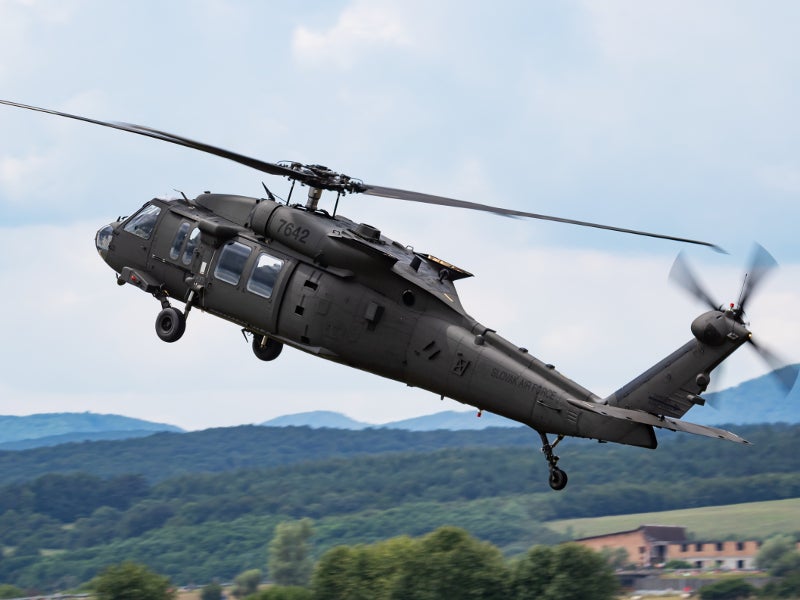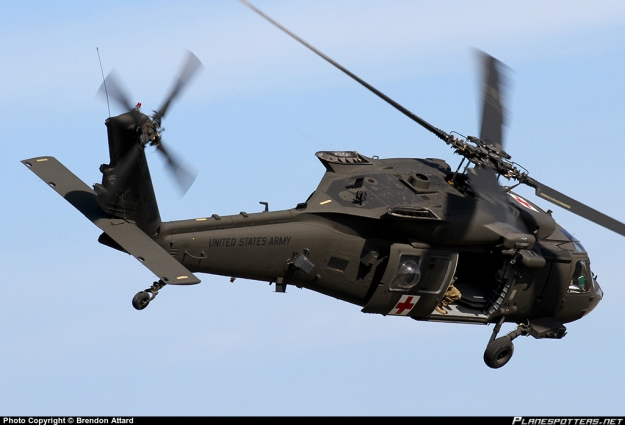Understanding the Mechanics and Engineering Behind Uh 60 Helicopters
The UH-60 helicopter, typically called the Black Hawk, stands as a pinnacle of contemporary rotorcraft innovation, symbolizing a mix of robust design and detailed auto mechanics. From its inception to its present models, the evolution of this airplane showcases a fusion of technology and functionality. As we peel off back the layers of the UH-60's layout, a world of elaborate systems and careful engineering emerges. Recognizing the mechanics and engineering behind this flexible aircraft unveils a realm where accuracy fulfills power, and where each component plays a critical role in attaining flight.
History of UH-60 Helicopters
The history of UH-60 helicopters traces back to the late 1970s when the United States Army looked for a functional and advanced utility helicopter to change its aging fleet. In action to this demand, the Sikorsky Airplane Corporation developed the UH-60 Black Hawk helicopter. Presented in 1979, the UH-60 swiftly ended up being a staple in army procedures because of its excellent abilities.
The UH-60 was designed to excel in a range of goals, consisting of troop transportation, clinical evacuation, electronic warfare, and unique procedures. Its ability to adjust to different roles made it a useful asset to the united state Army and various other army pressures worldwide
Over the years, the UH-60 system has undertaken a number of upgrades and variants to enhance its efficiency and keep rate with advancing objective requirements. These helicopters have actually seen substantial service in disputes such as the Gulf Battle, Afghanistan, and Iraq, showcasing their integrity and adaptability in diverse functional settings. The UH-60's abundant background is a testimony to its enduring heritage as a premier energy helicopter.

Engine and Power Equipments
Utilizing cutting-edge propulsion technology, UH-60 helicopters are equipped with innovative engine and power systems to make sure ideal performance and dependability in a variety of functional scenarios. The UH-60, frequently referred to as the Black Hawk, is powered by 2 General Electric T700-GE-701D engines, each capable of delivering up to 1,940 shaft horse power. These turboshaft engines supply the needed drive for the helicopter to perform its objectives properly, consisting of troop transportation, medical evacuation, and battle support.

Blades System and The Rules Of Aerodynamics
Exactly how do the rotor system and the rules of aerodynamics of UH-60 helicopters contribute to their functional performance and flight capabilities? The rotor system of the UH-60 helicopter plays a critical duty in supplying lift and propulsion.
Aerodynamics also play a vital role in the efficiency of UH-60 helicopters. The streamlined fuselage and blades blade style reduce drag, allowing the helicopter to achieve greater speeds and better gas effectiveness. The aerodynamic design of the UH-60 additionally adds to its ability to run in diverse environmental conditions, consisting of high elevations and hot temperature levels.
Avionics and Flight Control Systems

In its intricate sychronisation with the rotor system and the rules of aerodynamics of UH-60 helicopters, the avionics and flight control systems develop a crucial network of innovations forming the aircraft's functional capacities. Avionics encompass the digital systems made use of for interaction, navigation, and monitoring numerous aircraft features. In the UH-60, these systems consist of digital display screens, communication radios, GPS navigating, climate radar, and auto-pilot systems. These avionics systems offer essential info to the pilots, enhancing situational understanding and ensuring risk-free and reliable operation of the helicopter.
The flight control systems of the UH-60 are in charge of translating the pilot's inputs into the appropriate modifications to the rotor system, making certain steady flight and ability to move. These systems contain hydraulic actuators, servos, and computer systems that interact to control the tail and major blades, along with various other trip click site control surface areas. By specifically taking care of the helicopter's trip characteristics, these systems make it possible for pilots to execute a large range of objectives, from transportation and search-and-rescue to deal with procedures, with accuracy and self-confidence.
Function and Applications in Air Travel
The function and applications of avionics and flight control systems in air travel are essential to making sure the reliable and secure procedure of airplane, consisting of UH-60 helicopters. Avionics systems in UH-60 helicopters include a variety of electronic systems that aid in navigation, communication, monitoring, and controlling numerous airplane functions. These systems consist of electronic screens, autopilot systems, communication radios, general practitioner navigating tools, and climate radar. Trip control systems play an essential role in steering the helicopter in the air, maintaining stability, and making sure precise movements. The fly-by-wire modern technology made use of in modern-day UH-60 helicopters equates pilot inputs into digital signals, which are after that interpreted by the trip control computer systems to adjust the airplane's control surfaces. In addition, these systems integrate safety attributes such as autopilot settings, surface understanding warning systems, and security augmentation systems to boost the general safety and functional abilities of the UH-60 helicopters in various objectives, including army transport, clinical evacuation, search and rescue, and airborne firefighting.
Conclusion
In verdict, the UH-60 helicopter is a versatile airplane with a rich history and advanced engineering. Its engine and power systems, rotor system, the rules check over here of aerodynamics, avionics, and trip control systems all function with each other to make it a efficient and trustworthy machine.
In its intricate coordination with the rotor system and the rules of aerodynamics of UH-60 helicopters, the avionics and trip control systems create an important network of modern technologies forming the aircraft's operational abilities.The flight control systems of the UH-60 are responsible for check these guys out translating the pilot's inputs into the appropriate changes to the blades system, making sure steady flight and maneuverability. Avionics systems in UH-60 helicopters include a variety of electronic systems that help in navigating, communication, monitoring, and managing different aircraft functions. In addition, these systems integrate security functions such as autopilot modes, terrain recognition alerting systems, and stability augmentation systems to improve the general security and operational capacities of the UH-60 helicopters in numerous objectives, including troop transport, medical evacuation, search and rescue, and airborne firefighting.
Its engine and power systems, rotor system, aerodynamics, avionics, and flight control systems all function with each other to make it a reputable and reliable machine.